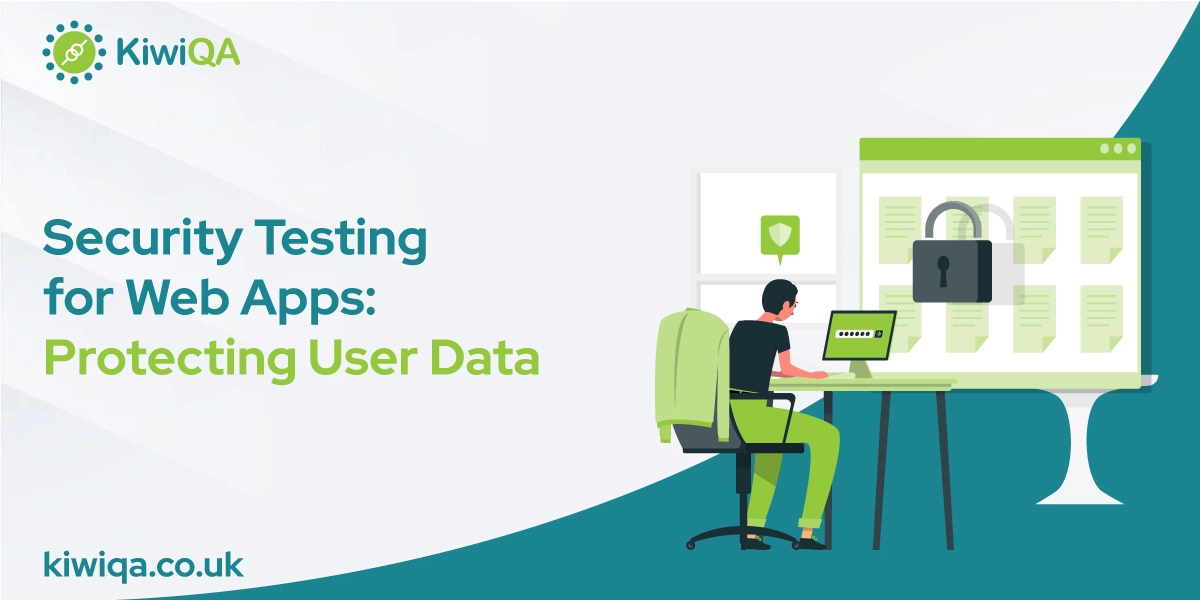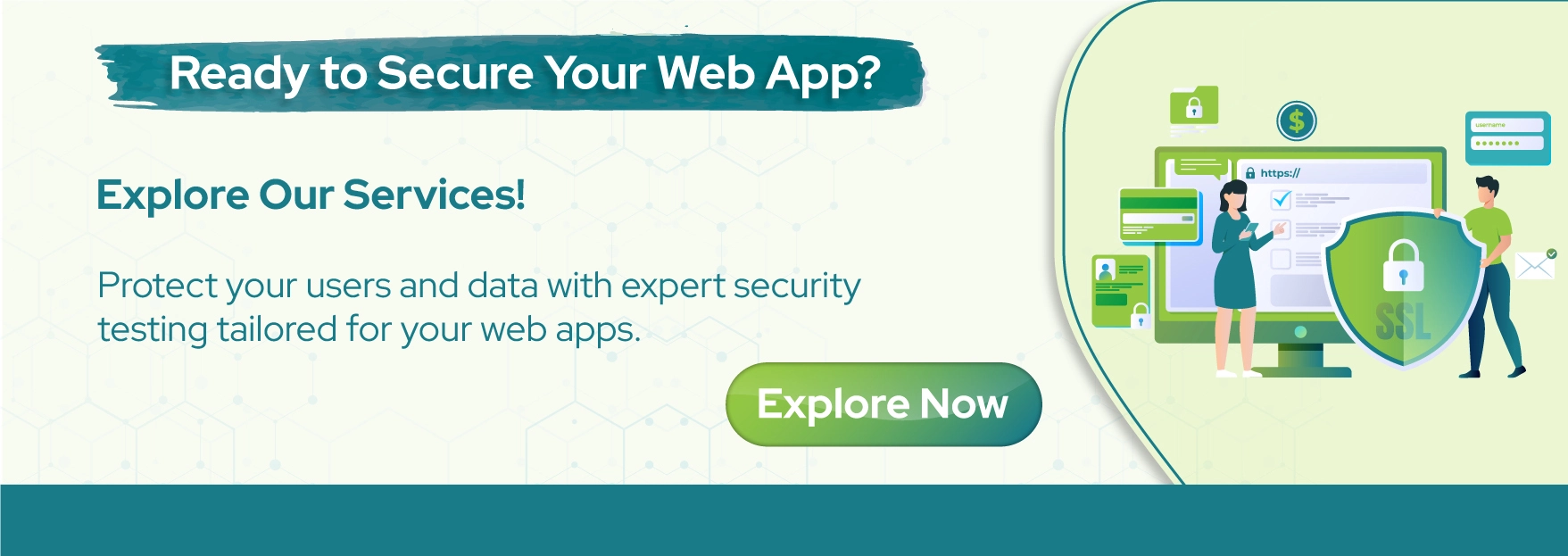Are you continuously going through multiple headlines regarding high-profile data breaching instances in your daily newspapers? This is because the globe is currently accounting for a series of fraudulent cases in the digital space. Many leading organizations are also facing this trap where their loyal customers’ data, like passwords, usernames, credit card details, etc., have been becoming vulnerable.
Gone were the days when the fraudsters were easily traceable. In the recent generation, hackers are becoming more profound with their data theft skills and boosting the number of cybercriminals. They are rigorously optimizing new ways to access sensitive information. This is why many prominent companies rely on the value of security testing services.
As per the recent analysis, the web application development market is enlarging its base and is ready to acquire around USD 141.49 Billion by the year 2033. This surging status is also pumping up the number of cyber threats. So, it is extremely crucial to initiate proper user data security for web applications.
The major reason behind it is to protect the important information your company has gathered from your customers who trust you. If any attackers are successful in stealing, altering, or destroying the clients’ data, this can hamper your reputation in the market, and it may nullify your reliability.
All this escalating number of cyberattacks has made it integral for a company to initiate security testing for their web application development. Security testing will mainly verify the whole infrastructure of the web development process and will detect if there are any weaknesses or vulnerabilities present in it. The test will also ensure if there are any potential points through which the breaching activities can take place.
What is Security Testing?
Are you looking forward to making your web applications authentic at the competitive edge? Then, you must prioritize the essential attributes of security software testing. It is a crucial testing process that evaluates software to detect if there are any vulnerabilities present in it. The following defects or vulnerabilities can become an easy access for the hackers to exploit your important data.
So, security testing for web applications allows testers to find the right solutions to the risks. The major objective of this testing is to ensure the software is safe and secured with all the sensitive data and that no unauthorized access can harm them.
Most people get confused between the role of security testing and functional testing. So, you should know their valuable differences. Functional testing mainly focuses on the APIs of your application working as per your business’s preferences. On the other hand, security testing detects any weaknesses or vulnerabilities present in the app’s structure that can attract malicious cyber attackers.
Also Read : Performance Testing for Web Applications: Delivering Reliability Under High Traffic
Key Security Threats to Web Applications
Here, we have enlisted some prominent types of cyber threats hovering over the digital space to destroy a web application. So, you need to acquire security testing for web-based applications to protect your business.
✅ Injection Attacks
- SQL Injection: In this type of attack, the criminals will manipulate your SQL queries and will try to modify and delete records of your database.
- Command Injection: In this type, the attackers will further exploit the vulnerabilities to initiate arbitrary system commands on your server. Many people get tricked through these unintended commands and get into the pitfalls of cybercriminal activities.
✅ Cross-Site Scripting
- Reflected XSS vs. Stored XSS: The Reflected XSS will start working immediately right after a user clicks on the default link. On the other hand, Stored XSS is reliably injected into your database and works when the user initiates loading a compromised page.
- Exploitation of XSS Vulnerabilities: In this phase, the attackers will effectively steal your pivotal cookies and redirect your users to defective websites. This is why you need to maintain integrity with Security Testing In Web Applications.
✅ Authentication & Authorization Flaws
- Vulnerable passwords and policies: If you consider weaker and more accessible passwords, attackers can easily decode them through your information. So, it is advisable to always prefer a strong password.
- Management of broken sessions: If your sessions are ineffectively managed, then they can be easily hacked, and the attackers can access your clients’ accounts.
✅ Security Misconfigurations
- Faulty Credentials: Criminals mainly exploit faulty and unchanged usernames and passwords. Through this, they gain access to a potential number of crucial data.
- Unpatched software: Outdated and unpatched applications are majorly vulnerable to attackers. So, ensure Security Testing Of Web Applications to keep your sites trendy.
✅ Data Exposure Risks
- Risky API endpoints: If your APIs are exposed publicly, it may channel the hackers to breach confidential information from your system.
- Weak Encryption: If the encryption is not implemented properly, the data can be at stake.
Valuable Strategies For Security Testing
Here, we have given some pivotal strategies for security testing you can consider. The following strategies will help your Security Testing On Web Applications to be more ethical and goal-oriented.
Manual VS Automated Security Testing Approaches
You can carry out the security testing manually or in an automated way. Each of the processes has its own benefits and limitations. Here, we will talk about them individually.
1. Manual Testing
In manual testing, you have to take the help of human testers who will effectively identify your web app’s logical flaws, vulnerabilities, and risks. The procedure will be time-consuming, but the results will definitely satiate you.
✅ Benefits: Human testers can easily identify complicated security flaws such as authentication bypasses and logic-based dangers. The testers will thoroughly analyze your business vulnerabilities as per real-world scenarios. It also allows ethical hackers to initiate hacking methods to verify the security gaps in the system.
✅ Limitations: The following procedure is time-consuming and requires the expert’s skillful knowledge. The process may consist of human errors, and large applications may be less scalable.
2. Automated Testing
Automated Security Testing Techniques For Web Applications uses a variety of tools to verify risks and vulnerabilities in the system. This process can be executed quickly with efficiently authentic results.
✅ Benefits: The testing process can be executed swiftly and can easily scan large applications. The whole process remains reliable and deletes all types of human errors. The testing can easily identify risks like XSS, SQL injection, etc.
✅ Limitations: It can showcase issues in verifying complicated logic flaws. It also demands regular and continuous updates to stay eminent as per the changing trends of cyber threats.
Various Types Of Security Testing
Here, you can go through the prominent types of security testing available in the market.
1. Penetration Testing
In penetration testing, you can use the processing of ethical hackers who will simulate real-world attacks on your system. Through this, you can identify if your web application has some hidden vulnerabilities, authentication flaws, and misconfigurations.
2. Vulnerability Scanning
It is a comprehensive approach to a vulnerability management program. It is considered to be a proactive mechanism that can detect weaknesses in your app’s digital infrastructure. Here, you can make use of automated tools to detect networks and systems and can make the Testing Web Application Security more authentic.
3. Code Review and Static Analysis
With a detailed code review and static analysis, you can be thorough about the security flaws and practices before the deployment process. Through this, your system will remain safeguarded from unauthorized logins.
4. Runtime Application Self-Protection
You need to take the help of Security Testing Services to execute the RASP. This testing process will effectively monitor your applications during the runtime. It will detect security threats and will accordingly block them with the right solutions.
Also Read : Web App Performance Testing Tools: Streamline Your User Experience
Best Practices to Approach Security Testing Of Web Applications
Follow these best practices to keep your security testing procedure more innumerable. Most importantly, abide by the help of a professional Security Testing Services Company to achieve beneficial results.
✅ Strong Authentication Mechanisms
- Multi-factor Authentication: Ensure your application has multiple steps for verification. For example, you can consider biometrics, passwords, OTPs, etc. to get rid of unauthorized accesses.
- Safeguard password storage: You should consider hashing for your passwords through which the Software Security Testing Services will execute secure algorithms. They will also add creative salts to prevent hackers from easily getting the credentials and database.
✅ Data Encryption & Secure Communication
- Encrypting data for better results: You need to precisely encrypt the stored data along with the transmitting data. The professional security testing services will infuse powerful encryption algorithms to safeguard your system from future breaches.
- HTTPS, TLS, etc., are great encryption algorithms: HTTPS and TLS are considered to be strong protocols that can carry on the encryption method for web traffic. This will prevent your applications from data leaks.
✅ Secure Coding Practices
- Acquire Validation and Sanitization: In this process, you need to effectively verify your customers’ data and validate their inputs instead of directly processing them in your system. This will help your applications to be safe from injection attacks.
- Precise API Development: You can also prioritize rate limiting and authentication to help your system prevent unauthorized access.
✅ Regular Security Audits & Monitoring
- Values of continuous security testing: You have to initiate regular code reviews, pen testing, and risk assessments to prevent your apps from data breaches.
- Utilize Security Information and Event Management Tools: SIEM tools mainly detect issues in the application and will make you aware of real-time threats. So you can easily access proactive measures.
Protect Your Users, Protect Your Business – Security Testing for Web Apps: Protecting User Data
From the above sections, we understood that a Security Testing Company should be our foremost priority if we want our web applications to succeed in the market. Web apps can attract cyber threats like authentication flaws, injection attacks, misconfigurations, etc. These probable risks can tarnish your business reputation in the market.
It is essential for your business to approach proactive measures for your applications with the help of security testing. You can consider code reviews, RASP, Pen testing, etc., to secure your systems.
So, if you want to strengthen your customers’ trust and unveil great success for your business, abide by the effective benefits of security testing.











Comments are closed.